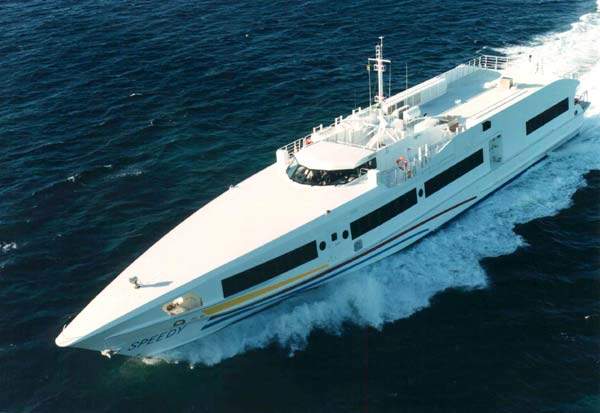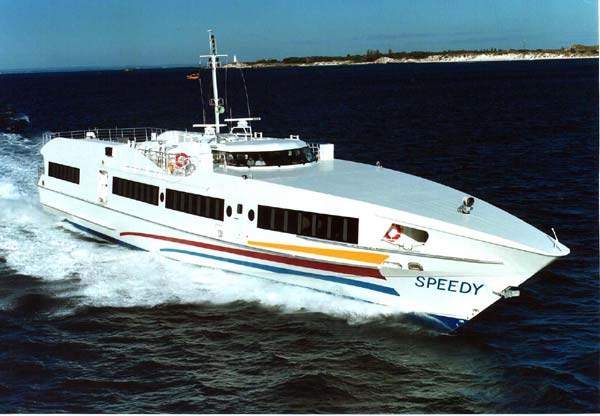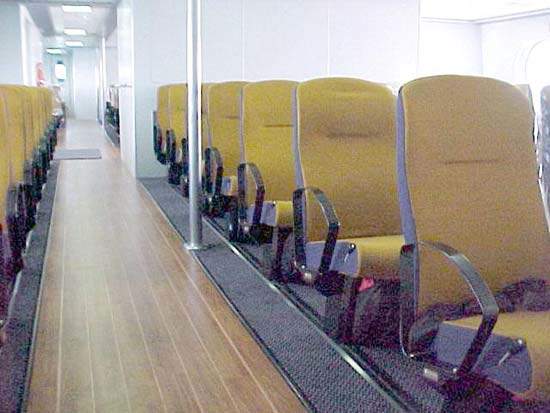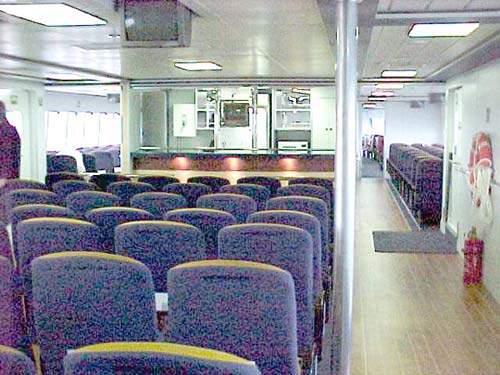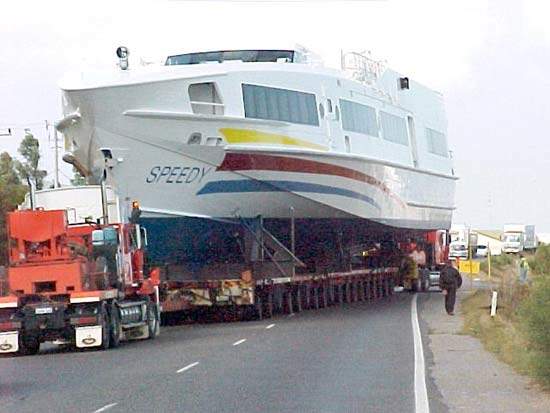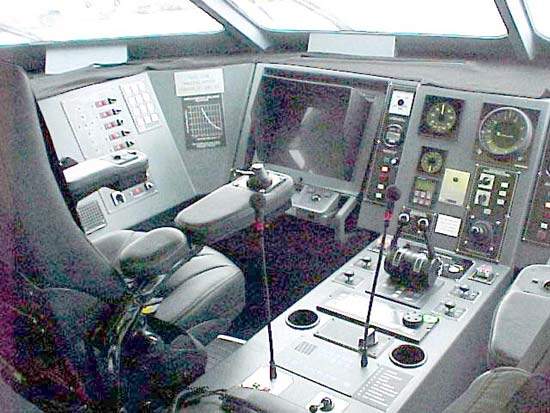The fast ferry Speedy was built by wavemaster in West Australia. It is an aluminium monohull fast passenger ferry. The route it operates consists of an 8-mile, four-hour journey across the German Bight between Bremen and Heligoland, stopping at Bremerhaven. It also serves the East Frisian islands of Spiekeroog and Wangerooge when tidal conditions permit entry into the shallow waters. The season lasts from April to October.
The fast ferry is operated by the Wittmund-based company Reederi Warrings, which purchased the Speedy for approximately DM11m. It is designed to carry 324 passengers. The interior is fully air-conditioned and heated. At 100% MCR in sea state two, the ship operates at a speed of 30 knots at 32t deadweight.
SAFETY
For safety, the machinery spaces include comprehensive fire and smoke detection CO2 or FM200 inert gas flooding. Throughout the accommodation, there is a sprinkler system.
WaveMaster has worked with Warrings to optimise the vessel for air and water restrictions requirements, as well as seakeeping and speed.
FERRY DESIGN
Foremost in the design is the need to accommodate all the passengers on a single deck, due to the demands of having to pass through a number of low bridges while travelling along the River Weser from Bremen. It has a maximum draught of 2m and a maximum air draught of 6m. A ballast tank has been located forward to reduce the draught at the propellers and adjust the trim to meet this maximum draught limit.
The Speedy has been designed with an overall length of 50m and a length at the waterline of 42.5m. It has a 9m moulded beam.
The restricted height necessitated flattening and recessing the control house and mounting the scanners on hinged bases so that they could be in a vertical position while the mast was lowered hydraulically.
Model testing was carried out by Schiffbautechnische Versuchsanstalt in Vienna. This was to check the seakeeping of the vessel at speed, in conditions typical of those that the vessel is likely to encounter during its operations on the North Sea. Tests were conducted in significant wave heights of 2m, at speeds of up to 27 knots in head seas, beam seas and seas at 30° to the bow. The vessel model was tested in both regular and irregular waves.
Recessing the wheelhouse into the accommodation area meant putting the seating over the engine and incorporating vibration/noise suppression techniques. The shop/reception/boarding areas are located towards the middle of the ship.
FERRY PROPULSION
The propulsion system is based on twin Caterpillar 3516b engines, which each produce continuous rating of 2,009kW at 1,855rpm. These drive a pair of five-bladed, highly skewed Teignbridge propellers by means of a ZF BW 755 gearbox. The ferry has a range of 200 nautical miles when operating at 80% output.
The ferry carries 8,000l of diesel fuel (normal tankage) and 500l of lube oil. There are also 1,000l of fresh water.
The power comes from two Caterpillar 3304 BT units, each generating 106kVA.
The ferry is classified by GL as +100A5 HSC Passenger OC3.

